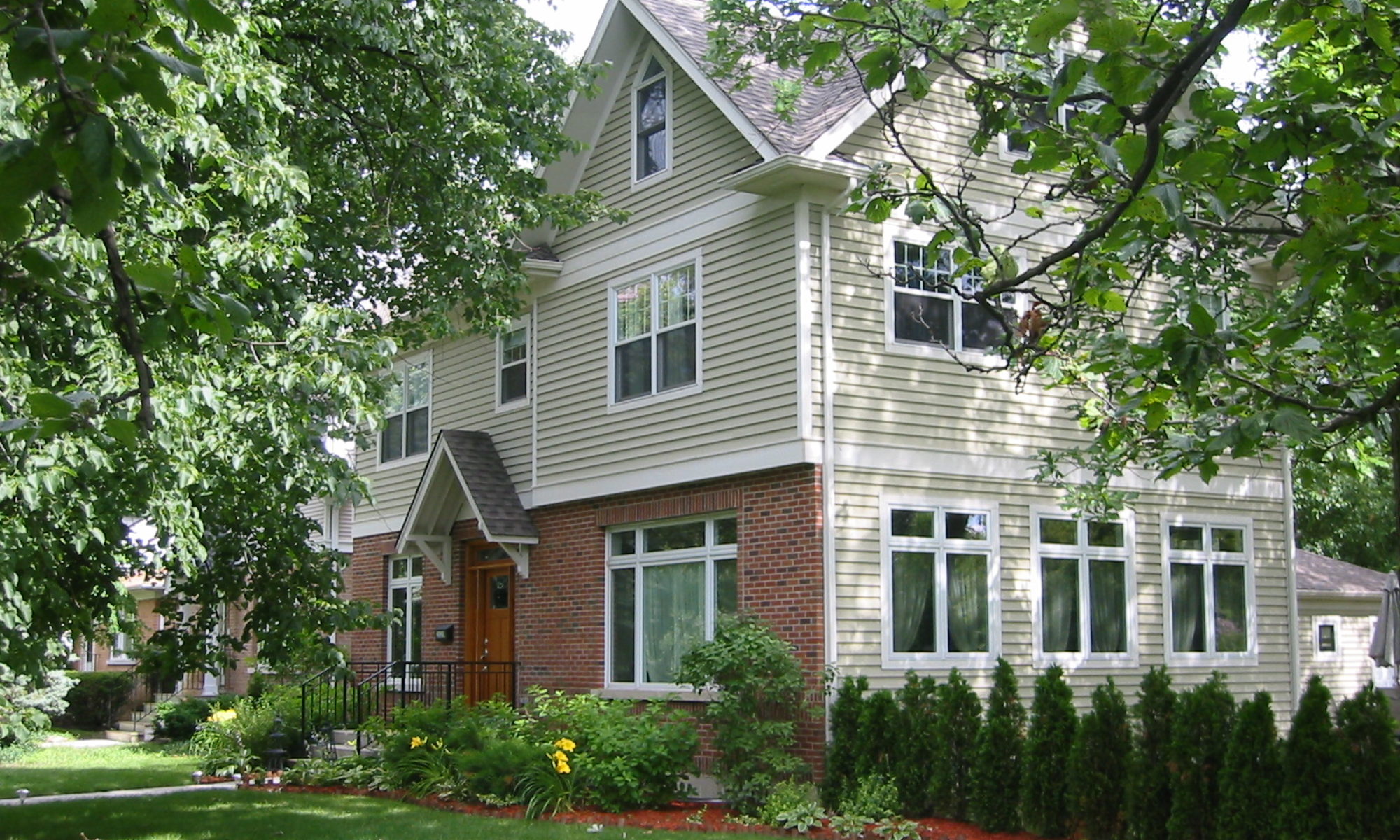Siding is the front line of defense against the elements and makes an important aesthetic contribution to the architectural style of the house.
An essential element of siding is the drainage plane behind it. It is the second line of defense against the elements. It is a design feature of the exterior wall that allows any moisture that gets behind the siding to evaporate or drain down the wall and away from the building.
First among them is housewrap, such as “Tyvek” or “Typar”. It is a sheet applied over the exterior wall sheathing that sheds water while still allowing water vapor from within to escape. There are other housewrap products that have an integral drainage mat that collects moisture and drain to the bottom of the wall.
Another system is extra strong extruded polystyrene exterior wall sheathing such as “Green Guard Plygood Ultra”. These boards have an R value of 1.8, low moisture absorption and when installed as a weather resistive barrier they do not require a separate housewrap sheet.
Another method is to create what is called a rain screen. Here a waterproof membrane is applied over the sheathing. Furring strips are attached vertically over the membrane and the siding is attached to them. This creates an airspace between the membrane and the siding, ensuring that moisture will drain and the siding can dry. It also provides a break from radiant heat transfer from the sun.
Regarding siding there are several factors for evaluating whether a particular kind of siding is green. Durability is important, especially to keep prematurely failed siding out of the landfill. Another consideration is the source and manufacture of the material. Was the material produced in an environmentally friendly way?
Wood siding has a long tradition in residential construction in this country because it is so prevalent. Many like the look of wood siding but it can require considerable maintenance. Wood should be decay resistant cedar or redwood. To be certain the material was harvested in an environmentally responsible way you could obtain wood that is Forest Stewardship Council (FSC) certified.
Stucco is a cement based mixture applied in 2 or 3 coats. It is durable and does not require a great deal of maintenance. Natural building proponents like it because it is made with lime, silica sand and white cement. It is an effective fire resistant barrier. It is labor intensive to install and thus costly.
Brick is also durable and fire resistant. Basically it is baked mud and thus a natural material. From a green standpoint a downside is there is a lot of embodied energy in brick. It takes a lot of energy to fire bricks and to transport them to the building site.
Fiber cement siding is another option with green attributes. It comes in panel form as well as planks that are applied horizontally. It is more difficult to install than wood but it holds paint longer than wood, reducing the need for maintenances. It’s very durable, resists fire, rot and insects.
Vinyl siding, polyvinyl chloride (PVC), is controversial in the green world. Negative factors are its toxic manufacturing by products such as dioxin, its pervasiveness in the environment and the difficulty in recycling post consumer PVC. Many don’t like its appearance. The upside is its low cost, durability, water resistance and easy maintenance. Many conclude that the health and pollution concerns of PVC make it a poor choice.
Aluminum siding is long lasting, recyclable, moisture resistant, low maintenance and easy to install. Negatively it has high embodied energy, is easily dented and many also don’t like its appearance.
And there’s steel siding. It has the positive attributes of aluminum, is stronger and requires less energy to produce. Negatively, it is painted and coated with PVC. And to some its appearance is unattractive.
How to choose? From an environmentally sustainable standpoint, choose a long lasting material that is suitable for the local climate and doesn’t require a lot of maintenance. The raw materials should be responsibly harvested or mined. The manufacturing process should not be energy intensive or polluting. And when the material reaches the end of its life cycle it’s good if it can be reused or recycled.
For the subject house I am proposing fiber cement siding with some stucco sections.

